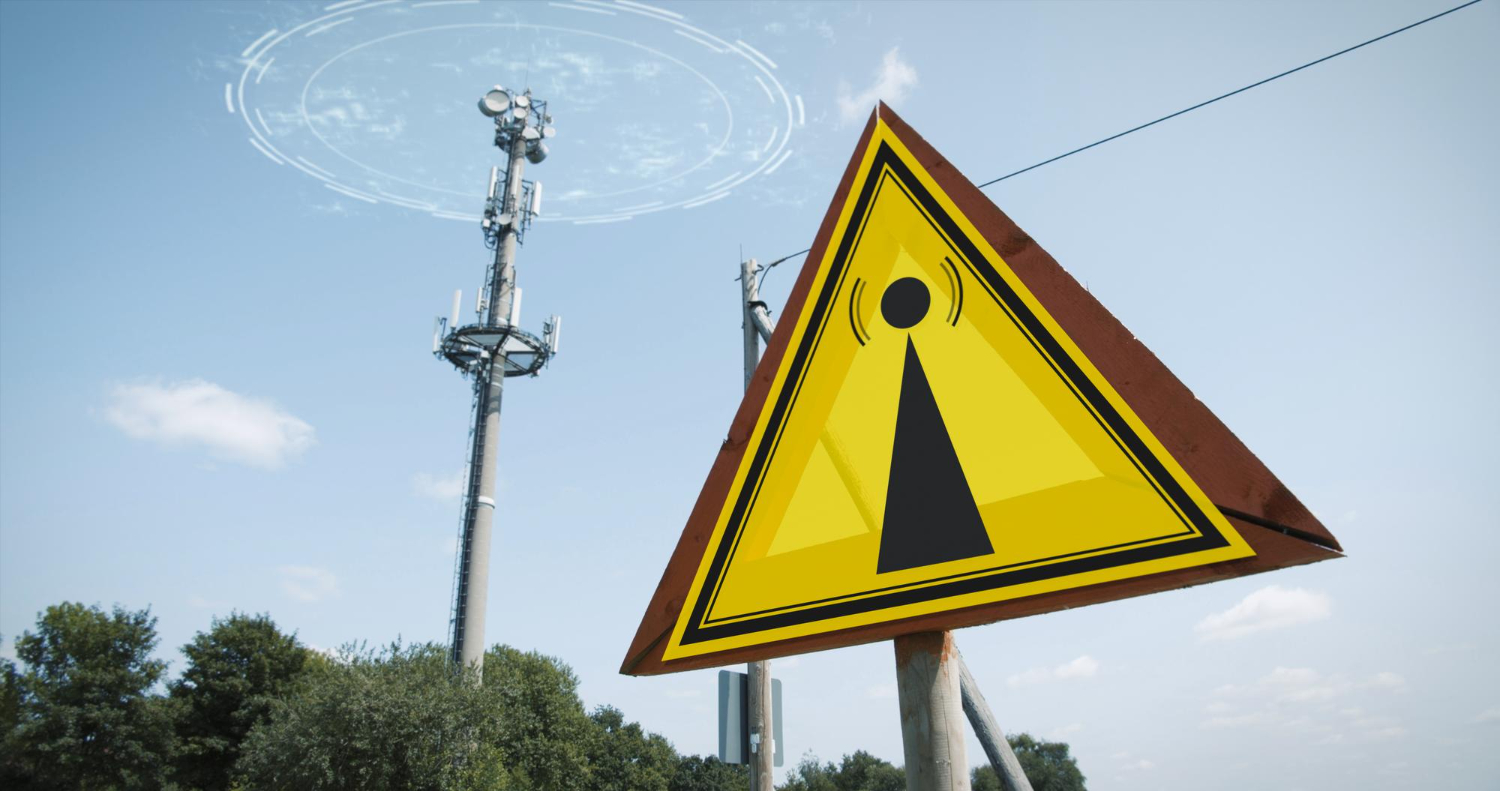In the past decade, mobile networks have transitioned from being pure communications infrastructure to becoming the foundational layer of digital society. Whether it’s voice calls, national identity systems, banking access, or industrial IoT — mobile networks are now deeply embedded in critical functions. This growing reliance, coupled with increased complexity and global interconnectivity, has significantly expanded the mobile network threat landscape.
Understanding this threat landscape is no longer optional for mobile operators, government cybersecurity bodies, or telecom security engineers. It’s the baseline for securing a rapidly evolving attack surface.
In this post, we break down the key components of the mobile network threat landscape in 2025, structured by vector, layer, and attacker type.
1. Legacy Protocols Remain High-Value Targets
Despite the arrival of 5G, protocols such as SS7, GTP, and Diameter are still widely deployed across production networks. Originally designed without security in mind, these protocols are inherently trusted and typically lack proper authentication, encryption, or validation mechanisms.
Common attack scenarios include:
- SS7 abuse for geo-location, call redirection, and SMS interception.
- Diameter exploitation for subscriber impersonation and DoS targeting core elements.
- GTP-C tunneling abuse, used to bypass billing, inject traffic, or reroute sessions.
What makes these especially dangerous is the fact that many operators still expose legacy protocol access via roaming links or poorly segmented interconnects. Attackers don't need to compromise the core network; they just need access to an insecure border node or a trusted peer.
2. Interconnect Exploits and Roaming-Based Threats
Telecom networks are, by design, interconnected. That interconnection creates implicit trust between operators, regions, and vendors. This is exactly where attackers operate best — in the blind spots of assumed trust.
Key threats in this category:
- Interconnect-level attacks exploiting weaknesses in peering configurations.
- Roaming links that downgrade session security or introduce legacy protocol fallback paths.
- Malicious or compromised partners using shared links to inject signaling abuse or trigger session misbehavior.
Even with proper firewalling, real-world interconnect enforcement is inconsistent across operators. Attackers increasingly exploit this asymmetry, especially when targeting regional carriers or overlooked B2B MVNOs.
3. 5G-Specific and Cloud-Native Vulnerabilities
5G introduced a more modular, API-driven architecture known as Service-Based Architecture (SBA). While the 5G standard introduces numerous security enhancements, real-world implementations often deviate from the ideal due to speed of deployment, vendor constraints, or lack of internal expertise.
Observed misconfigurations include:
- Missing or optional TLS encryption between Network Functions (NFs).
- Exposed API endpoints, especially the Network Exposure Function (NEF), with weak or missing authentication.
- Improperly isolated slices, enabling data leakage or cross-slice privilege escalation.
Worse, many network functions are now virtualized or containerized, hosted on shared infrastructure that wasn’t originally designed for telecom workloads. This opens the door to horizontal privilege escalation, side-channel leakage, and VM/container breakout attacks — concepts traditionally associated with enterprise cloud but now fully relevant to telecom cores.
4. Open RAN: Opportunity Meets Exposure
The introduction of Open Radio Access Network (Open RAN) has been one of the most disruptive innovations in mobile network architecture. While it brings flexibility and cost reduction through disaggregation, it also creates security concerns across new interfaces, new vendors, and new operational processes.
Emerging threats include:
- Exploitable interfaces between Central Unit (CU), Distributed Unit (DU), and Radio Unit (RU).
- Insecure management protocols (e.g., SSH, SNMP) on RAN components.
- Insufficient testing and hardening of vendor-specific software running in RU or DU environments.
- Backdoors or misconfigurations introduced through third-party modules or firmware updates.
Without end-to-end visibility and code-level assurance, the complexity of Open RAN turns every deployment into a potential security puzzle with unpredictable attack paths.
5. User-Facing Threats and Telecom-Enabled Fraud
Not all threats target infrastructure directly. Increasingly, attackers are targeting users by leveraging weak spots in identity, provisioning, and messaging systems.
Popular vectors:
- SIM swap fraud, enabling attackers to bypass two-factor authentication.
- Smishing (SMS phishing) campaigns, often spoofing trusted brands or national services.
- Over-the-air (OTA) provisioning abuse, including silent SIM profile injection.
- Misuse of SMS-C and IMS gateways, allowing delivery of malicious payloads or spoofed messages.
Operators often underestimate these threats because they cross boundaries between customer care, fraud management, and network engineering. But from the attacker’s perspective, it’s all part of the same exposed surface.
6. Advanced Persistent Threats (APT) and Nation-State Actors
Mobile networks are national assets — which makes them high-value targets for espionage, disruption, and influence operations. Nation-state actors, often equipped with zero-day vulnerabilities or inside knowledge of mobile infrastructure, pursue long-term objectives like:
- Persistent signaling layer access for monitoring population movement or intercepting voice/SMS.
- Compromised NEs (Network Elements) to stage large-scale surveillance or data exfiltration.
- Cross-domain attacks, such as pivoting from IT to telecom core via shared services (e.g., DNS, LDAP).
These actors are patient, sophisticated, and often hard to detect using conventional NOC/SOC tools.
7. Monitoring Gaps and the Detection Deficit
A major theme in mobile security is visibility — or lack thereof.
Traditional SIEMs and IDS solutions are built for TCP/IP and web protocols, not telecom stacks. As a result, many operators rely on custom scripts, vendor alerts, or log-based anomaly detection — none of which are effective against protocol-layer abuse or SBA API probing.
Key visibility gaps include:
- No real-time SS7/GTP/Diameter anomaly detection in roaming links.
- Lack of attack simulation tooling for red/blue team validation.
- Low visibility into signaling message sequences, leading to silent misbehavior.
This blind spot is what attackers count on. Protocol-aware monitoring is no longer optional. It’s the only way to detect multi-layered, slow-burn attacks before damage is done.
8. Emerging and Compound Attack Surfaces
The threat landscape is no longer static. It’s shaped by innovation — and attackers follow fast. In 2025 and beyond, operators must prepare for:
- Hybrid attacks combining telecom and enterprise vectors (e.g., DNS poisoning + SIP injection).
- Edge-based threats targeting MEC (Multi-access Edge Computing) sites with weak perimeter defense.
- Vendor supply chain risks, from embedded backdoors to compromised update channels.
- Security regression from backward compatibility, where new deployments still maintain insecure legacy fallbacks.
The result is a more dynamic, interconnected, and opaque threat landscape—where traditional segmentation, firewalls, or “just block it at the edge” thinking no longer works.
Conclusion
The mobile threat landscape is broader, deeper, and more complex than ever before. Attackers are no longer lone hackers exploiting SMS systems — they are well-resourced, technically competent actors targeting national infrastructure, personal identity, and economic lifelines.
Defending against them requires more than reactive patching or check-the-box compliance. It requires protocol-level visibility, architectural discipline, supply chain scrutiny, and active threat simulation.
Mobile network security isn’t just about protecting telecoms anymore. It’s about protecting trust in the systems that run our digital world.
🔐 Looking for the full picture? Explore the Ultimate Guide to Mobile Network Security — your complete resource on telecom security, from architecture to audits.




